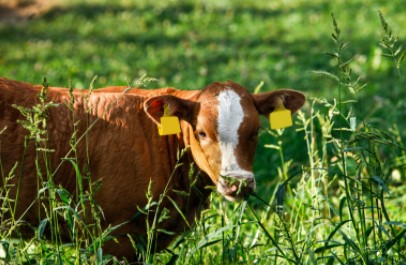
“We know that diet-related chronic disease is the major driver of healthcare costs. We know that no one can afford them, and we know that agriculture can be the solution,” Stover said. “We have a new expectation of the food system now: to lower healthcare costs and prevent chronic diseases.”
Stover said this expectation also comes with a continued charge of sustainability. In other words, the food system must produce more food for growing populations using innovative strategies and technology that requires less land, conserves natural resources and reduces agriculture’s environmental footprint.
“We have to make sure our agriculture is both responsive and resilient,” Stover said. “Agriculture systems are not just about quantity of production, but about being responsive to the new expectations of the food system around human health, environmental health and economic health.”
AgriLife is one of the largest agriculture and environmental programs in the U.S. and the world. As part of a global agency for change, AgriLife educators and researchers play a critical role in responding to society’s new expectations for the food system, Stover said.
“If we are going to achieve the full potential of agriculture — to solve many of these problems in human and environmental health — we are going to have to bring the very best science to bear,” Stover said.
In a session following Stover’s keynote address, a panel of scientists from Texas A&M AgriLife presented on what innovations the College of Agriculture and Life Sciences is bringing to the table.
Innovations in conserving land, providing nutrition and enhancing human health
AgriLife Research faculty presenting at the conference included Bill Fox, Ph.D., associate professor in Rangeland, Wildlife and Fisheries Management, RWFM, at the Texas A&M AgriLife Blackland Research and Extension Center, who moderated the session; Doug Tolleson, Ph.D., an RWFM associate professor at the Texas A&M AgriLife Sonora Station; Luis Tedeschi, Ph.D., professor in the Department of Animal Science; and Rebecca Seguin-Fowler, Ph.D., associate professor in the Department of Nutrition and Food Science and associate director of AgriLife Research.
Tolleson and Tedeschi discussed land conservation and management and provided examples of strategies for effective and sustainable livestock production that balances enhanced food production yields with animal welfare and environmental sustainability.

Sustainable livestock production includes balancing animal welfare with natural resources conservation.
“Conservation, management and production are not mutually exclusive,” Tolleson stated. “In fact, they must go hand-in-hand so that land health will be sustainable in the long-term.”
Seguin-Fowler rounded out the session by discussing the idea of systemic change throughout the food chain and introduced ways that Texas A&M AgriLife is using interventions, systems and strategic partnerships to promote health and enact community change at the consumer level.
“I was very excited to participate in the EarthX conference this year, alongside my colleagues from Texas A&M AgriLife, to discuss the approaches we’re using to develop, evaluate, scale-up and disseminate nutrition and food system, built environment, and obesity prevention projects and programs to reduce the burden of related chronic diseases,” Seguin-Fowler said.
AgriLife representatives were joined by national leaders in conservation, including other university faculty, agricultural producers, landowners, agency and nonprofit professionals, legislators, and business owners from all over the world. All came together to raise awareness for conservation and responsible resource use in the wake of rising challenges.
Stover said the topics of the days’ events, like climate change, environmental degradation and rising healthcare costs pose serious challenges but present no problem too complex for world conservation leaders and researchers to solve.
“While the challenges are immense, they are achievable,” Stover said in his concluding comments. “We will achieve them by getting our science right and unleashing the power of technology.”
Source : tamu.edu